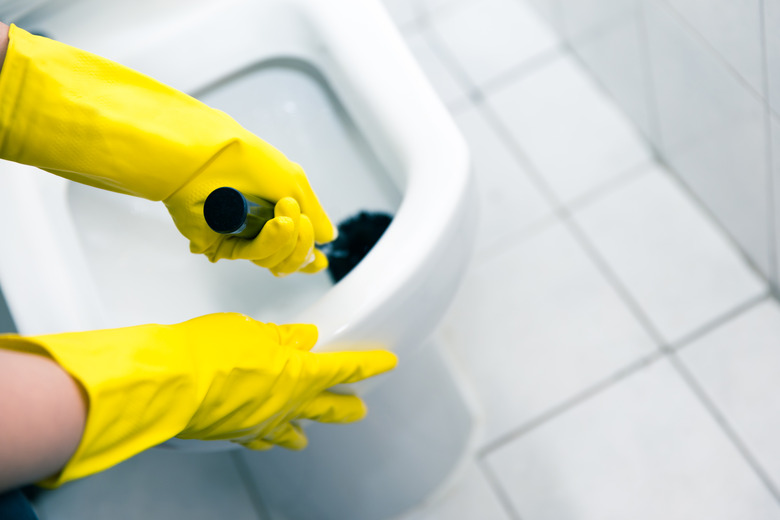How To Clean A Toilet Brush
We may receive a commission on purchases made from links.
The toilet brush has one of the home's dirtiest jobs, and should receive more than a quick flushing-action swirl or rinse after every use. Learn how to clean a toilet brush, oust germs, get rid of stains and keep the bristles from yellowing so you have a hardworking tool that's sanitary and ready for the next dunk and scour.
The Daily Swirl Improved
The Daily Swirl Improved
Each time you clean the toilet, the brush needs at least a little attention too. To clean a toilet brush, start by flushing the toilet, letting the cleaned bowl fill with fresh water. Rest the brush's handle on the rim, holding the bristles over the water.
According to Clean My Space, the next step is to pour about 1/2 cup of bleach over the bristles and at least a few inches up the handle from the bristle area; bleach is septic tank safe when used according to the manufacturer's directions.
Swish the brush in the clean water to loosen any particles and germs. Flush the toilet again, and allow the swirling water to flow over the bristles, turning it to rinse all the way around, or on both sides of a loop-style brush. Secure the brush handle between the bowl and toilet seat, leaving it to drip into the bowl and air dry.
Yucky Yellowing and Bristle Stains
Yucky Yellowing and Bristle Stains
Over time, your hardworking toilet brush's bristles can turn from white to yuck. Restore the bristles' whiteness, at least somewhat, by placing the brush in a bucket of warm water. Add a cup or so of baking soda, using the brush to stir it in.
Leave it to soak overnight. Not only does baking soda work well to whiten yellowed or stained bristles, it helps remove odors too.
Clean a Toilet Brush Naturally
Clean a Toilet Brush Naturally
Some natural or green cleaning products have disinfecting properties, allowing you to ditch harsh chemical-based cleaners. According to the David Suzuki Foundation, septic-tank-safe white vinegar, for instance, kills germs, and makes a toilet sparkle, especially if you add a tablespoon or two of baking soda. Use vinegar on the brush after a flush, rather than pouring bleach on it after a "bowl workout."
Sprinkle the brush with baking soda and give it an odor-ridding swish in the clean water. Again, air dry the brush before placing it back in its holder — storing the brush wet or damp encourages bacteria growth.
The Real Dirt on Bristles
The Real Dirt on Bristles
Giving a toilet brush a quick cleaning after each use is fine, but after every half dozen or so uses you should sanitize it thoroughly. In a bucket, soak the brush overnight in your preferred disinfectant — diluted bleach or full-strength vinegar, for example. Also, immerse a brush holder in the disinfectant solution.
Use a scrub brush to clean between bristles, along the handle and inside and around the holder, wearing rubber gloves to protect your hands. Rinse the tool or set, and let it air dry. Typically, toilet brushes are made from durable, quality materials, designed to hold up well to even corrosive toilet-cleaning products — but eventually the brush needs to be replaced. Replace the brush when it shows signs of wear, such as bent or missing bristles.
